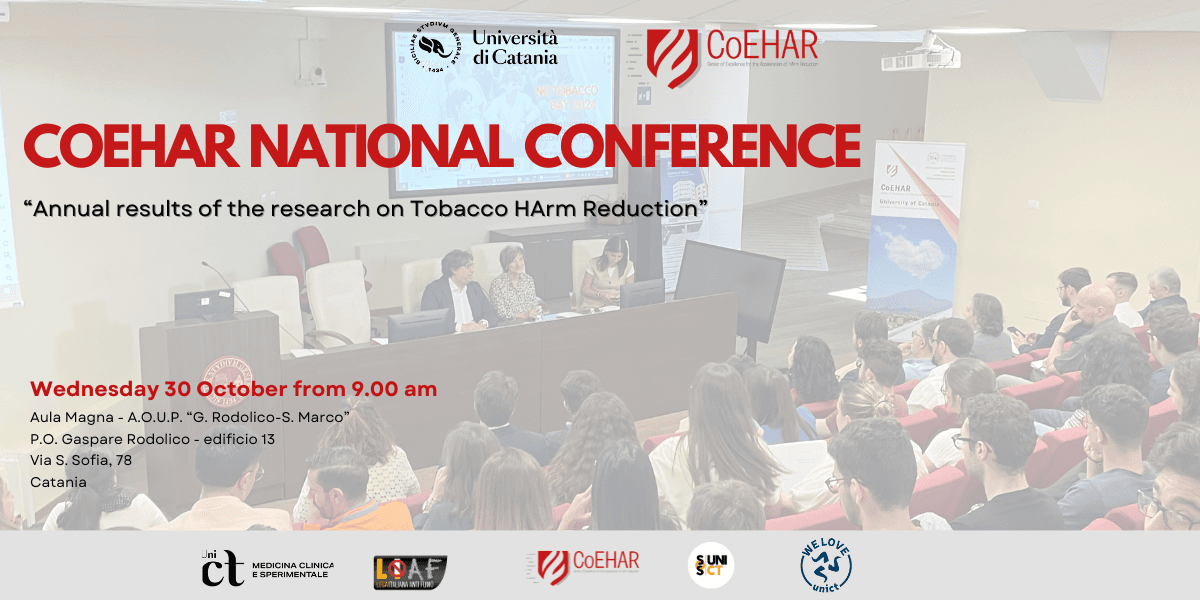The use of e-cigarette among teenagers in the United States is considered a significant public health problem. A close look at federal data now show that the number of young e-cigarette users has markedly declined to below epidemic levels since its peak in 2019.
Vaping by young non-smokers is a legitimate concern, but known risks from vaping are often greatly exaggerated. There has been a surge in electronic cigarette popularity among youth over the past decade, but since 2019 there has been a drastic decrease in the number of e-cigarette users among adolescents. During the same period, smoking rates have constantly fallen to new low record levels.
Prof. Riccardo Polosa, founder of the CoEHAR of the University of Catania, Prof. Thomas B. Casale of the University of Florida and Prof. Donald P. Tashkin of UCLA Health Sciences of Los Angeles, have just published in “The Journal of Allergy and Clinical Immunology: In Practice” the state-of -the-art article “A close look at vaping in adolescents and young adults in the USA” dedicated exclusively to the size of the problem and the real health implications among teenagers using these consumer products.
The goal of the article is to provides updated information on current vaping trends among adolescents and young adults in the United States, and to assess the impact of EC usage on their respiratory health.
Among high school students EC use has increased substantially over the past decade, but has now declined significantly since its peak in 2019. In contrast, over the same time interval smoking rates have substantially and consistently declined to record low levels.
These trends and most recent high-quality analyses do not suggest that EC use is a gateway to smoking. The vast majority of EC use is infrequent and unlikely to increase an individual’s risk for adverse health effects. Moreover, most EC use has occurred among those who have already smoked and rarely among those who have never smoked.
A similar increase in vaping has been reported among young adults (18-24 years of age) over the past decade, although to a less extent than among high school students. Over the same time, smoking rates have markedly declined, but remain higher than the rates in high school students. As with high school students, it does not appear that EC use serves as a gateway to smoking. Data show that the majority of EC usage has happened among those who previously smoked.
Interestingly, the proportion of dual users has been falling in recent years – federal surveys now report high declines in dual usage rate (NHIS 2019 23%; NYTS 2021 12.5%). This is probably due to several factors: as the technologies improve over time, it is likely that more of the users will find exclusive vaping a satisfactory alternative to smoking. Dual-use should be properly understood as part of a behavioral pathway that evolves over time, not something this is static and fixed. Vaping may start with no intention to quit smoking, but as the user becomes more familiar and finds the product they like they gradually make more use of the product in more situations.

“It is good news that vaping among high school students is fast declining, so much that teen vaping epidemic is now over” said Prof. Polosa “It is even better news that high school cigarette smoking is fast declining, with smoking rates reaching their lowest historical figures. Eradication of tobacco smoking is in sight!… but we must remain vigilant to ensure that vaping levels among youth continue to stay low. In the meanwhile, authorities must enforce current regulations addressing illicit sales to minors to limit access to tobacco and nicotine products”.

“Frequent/daily electronic cigarette use among adolescents is not highly prevalent: the largest portion of nicotine delivery products young users reported the use only 1-2 times a month. The federal data show daily EC use is not common. We need strong prevention campaigns among students to inform about potential risks” added Prof. Thomas B. Casale.
Another important finding is that a large majority of high school vapers are vaping marijuana at comparatively high frequency. The growing popularity of marijuana vaping is of serious concern since its use during adolescence is associated with decline in memory, attention and learning.

“Adolescents and young adults should not vape, smoke, binge drink or use illicit drugs, but some will take the risks, no matter what adults tell them. There is a real concern regarding marijuana use among this vulnerable population but only limited information is available on long-term adverse health outcomes of these products” stated Prof. Donald P. Tashkin.
The 2019 NYTS (The National Youth Tobacco Survey) confirmed a significant increase in vaping among high school students from previous years: the electronic cigarette use rose from 7,6% in 2017 to 15,1% in 2018 and to 22,4% in 2019. In contrast, current use of tobacco cigarettes declined from 3,6% in 2017 to 0,8% in 2019. However, the 2021 NYTS data has shown a 58% reduction in high school vaping from a peak prevalence of 27,4% in 2019, and 11,2% in 2021.
“We do not know if ecig use in youth can lead to negative health outcomes in adulthood and high quality long-term high-quality studies are needed – concluded Polosa – although vaping has been linked to respiratory symptoms, they tend to be transient and of uncertain significance. Compared to conventional cigarettes, electronic cigarettes emit far fewer toxicants and carcinogens and the harm reduction compared to conventional cigarette smoking is now certain”.





